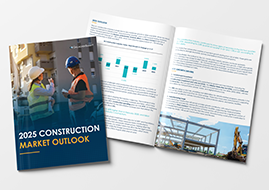
January 24, 2024 — Consider the following from a recent article in the All Things Work blog published by The Society of Human Resource Managers (SHRM):
The fundamental role of the C-suite has changed. In the past, the leadership team's job was to keep the existing machine humming, optimizing for efficiency and profitability. But now the challenge goes beyond delivering business results to driving transformation — in effect, building a new machine that will thrive in the future and, ideally, the present.
The article goes on to suggest that perhaps the title CEO should be replaced with Chief Inquiry Officer* since piloting an enterprise now is all about how it adapts to an ever-changing future in an ever-shifting marketplace. How many major products being produced and sold today didn't exist a couple decades ago? Hey — just ask your friendly AI assistant — Alexa, Siri, Chat, Claude, or one of the others, to count them for you.
The article's authors ask us to reimagine the whole idea of the C-suite and what it does. Not long ago, many large companies operated on the idea of "steady as she goes" and management was rewarded for doing more of the same thing every year at a better margin. Nowadays that's the GPS route to the garbage dump of history. Here's the point for our readers: Transformation means constantly shifting risks and exposures as well as markets and products.
Not long ago risk managers could look at their company's exposures almost as old friends. We all knew each other well. Lately there's a new exposure kid on the risk block every time we turn around. Elevating inquiry and innovation as corporate goals has to mean elevating risk science as well. It has to mean making a seat for risk whenever new ideas are on the agenda. We aren't "insurance buyers" any longer.
The burgeoning discussions around AI are a good example. We're all just beginning to understand that Large Language Model AI brings new risks along with it. We never had to worry about a glorified Excel spreadsheet type application "hallucinating", but some AI applications seem to be capable, under certain circumstances, of scrambling facts into misleading responses.** I wouldn't be surprised to see "AI exposure" become a new category of cyber risk, if it's not already.
Innovation is the lifeblood of today's economy; but innovation also means taking risks, new risks. As we have noted in this space before, risk management needs to be at the table when innovation and corporate transformation are on the agenda. Most of us like to have first mover advantage when new markets open up or new concepts drive new business models, but we also have to keep in mind that the corollary of "a bold new approach (or model or concept)" is "Oops, we never had to think about [fill in the blank] before." Never let risk be an afterthought.
*Yes, the acronym CIO is already taken, but what does that really mean now when everyone deals in information by the long ton?
**I asked my own private home AI (Claude 2.0) about this and it gave me a long, multi-part answer that included "Some AI systems are designed to respond confidently even when they are not sure of the answer. This could lead to factual errors."
Author

Dr. Gary Anderberg
Make Gallagher Bassett your dependable partner
When making the right decision at the right time is critical to minimize risk for your business, count on Gallagher Bassett's extensive experience and global network to deliver.

